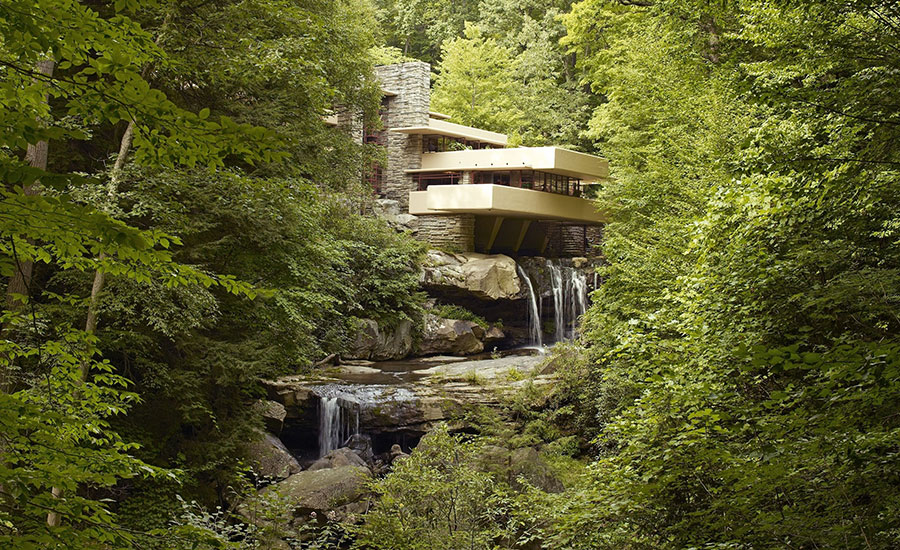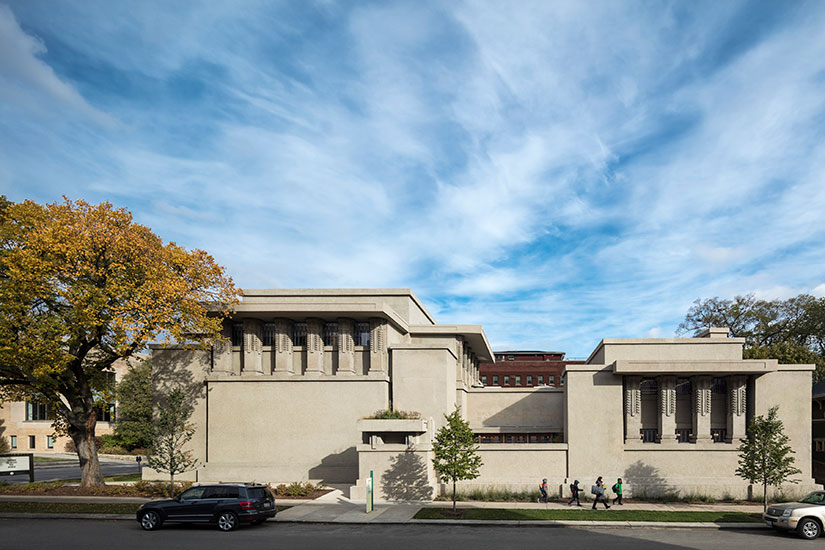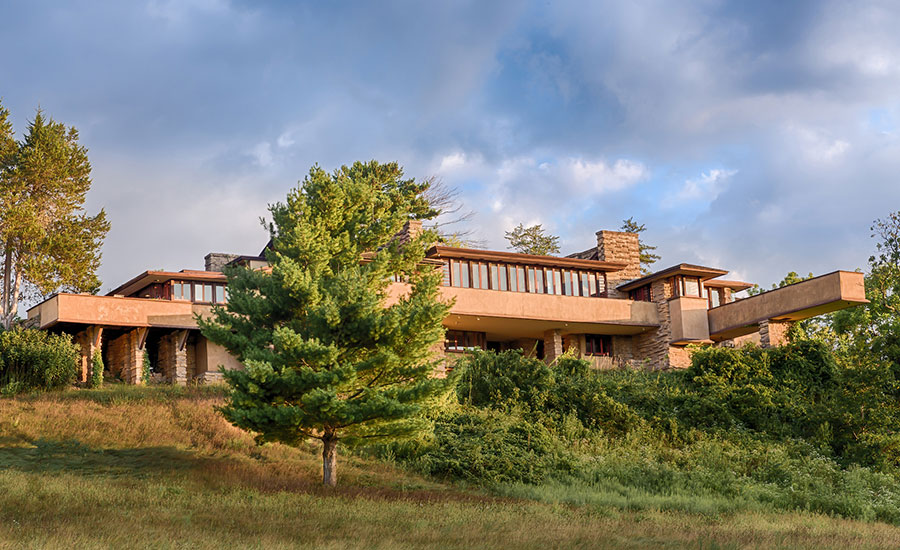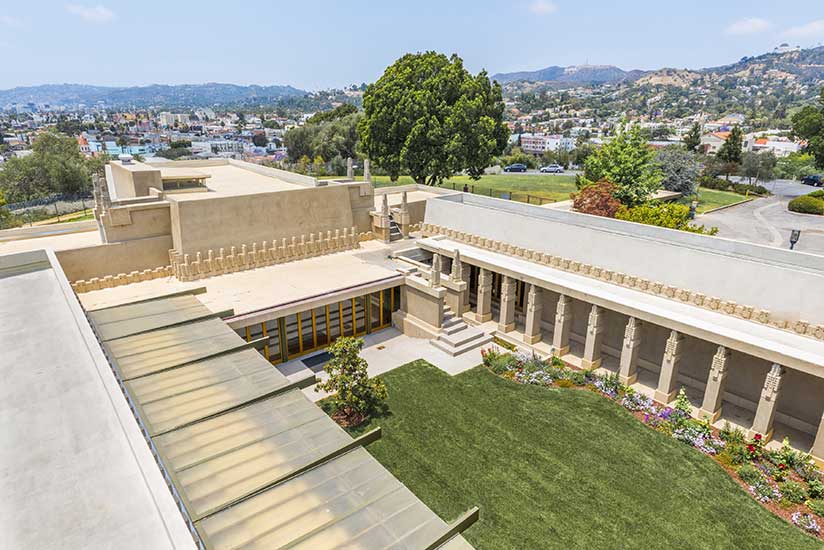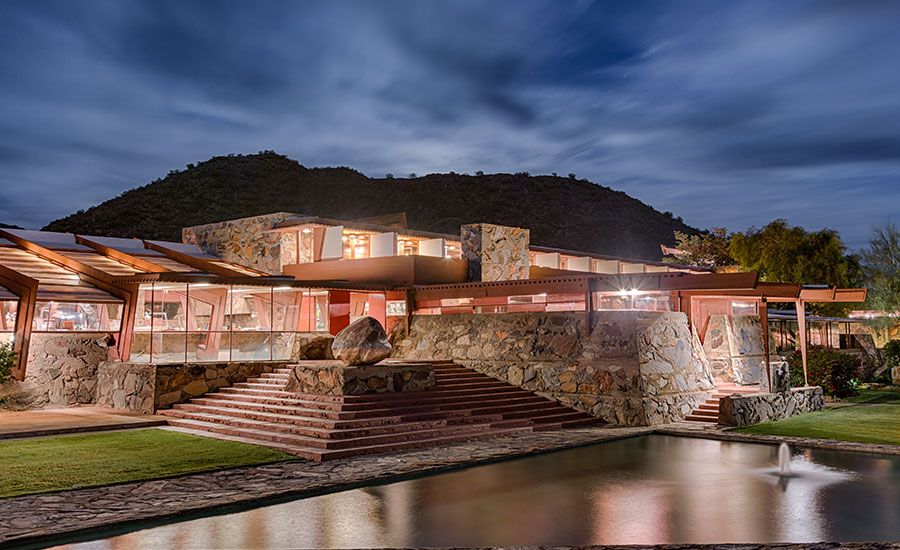UNESCO Adds Eight Frank Lloyd Wright Buildings to World Heritage List

Fallingwater, designed for the Kaufmann family, in Mill Run, Pennsylvania (1964)
Photo © Carol M. Highsmith via Wikimedia Commons

The Usonian-style Herbert and Catherine Jacobs House in Madison, Wisconsin (1936)
Photo by David Heald, © James Dennis

Unity Temple, a Unitarian Universalist church in Oak Park, Illinois (1908)
Photo © Tom Rossiter, courtesy of Harboe Architects

The Frederick C. Robie House in Chicago, which reopened in March (1906)
Photo © James Caulfield

Taliesin, a locally inspired residence, in Spring Green, Wisconsin (1911)
Photo by Andrew Pielage

The Hollyhock House, Wright’s first West Coast project (1921)
Photo by Joshua White, © Hollyhock House

Taliesin West, Wright’s winter home, in Scottsdale, Arizona (1937)
Photo by Andrew Pielage

The Guggenheim Museum, lauded by architects but criticized by artists, in New York (1956)
Photo by David Heald © Solomon R. Guggenheim Foundation








The United Nations Educational, Scientific and Cultural Organization (UNESCO) World Heritage Committee has added eight buildings designed by Frank Lloyd Wright to the World Heritage List.
The eight structures—which, taken together, constitute a single new “cultural site” on the UNESCO list—are all highlights of Wright’s career: Fallingwater, a residence designed for the Kaufmann family in Mill Run, Pennsylvania, and completed in 1938; the Herbert and Katherine Jacobs House in Madison, Wisconsin, considered Wright’s first Usonian structure; Unity Temple (1908), a monumental, luminous church in Oak Park, Illinois, restored in 2017; the Frederick C. Robie House (1910) in Chicago, a Prairie School–style home, which reopened this year; Taliesin in Spring Green, Wisconsin, a residence of limestone and sand culled from the local landscape; the Hollyhock House in Los Angeles, built in 1917; Taliesin West, Wright’s winter home, completed in 1937, in Scottsdale, Arizona; and the circular, spiraling Guggenheim Museum in New York, finished in 1956.
The UNESCO World Heritage List recognizes sites of “outstanding universal value.” Wright’s eight works represent key elements of “organic architecture,” exemplified by his use of open plans, the blurring of lines between interior and exterior spaces, and the distinctive implementation of reinforced steel and concrete.
This designation has been in the works for more than 15 years, an effort led by the Frank Lloyd Wright Building Conservancy—an organization dedicated to preserving Wright’s works—along with the National Park Service and representatives from each site.
“This recognition by UNESCO is a significant way for us to reconfirm how important Frank Lloyd Wright was to the development of modern architecture around the world,” said Barbara Gordon, executive director of the Frank Lloyd Wright Building Conservancy, in a statement. “There are nearly 400 remaining structures designed by Wright. Our hope is that the inscription of these eight major works also brings awareness to the importance of preserving all of his buildings as a vital part of our artistic, cultural and architectural heritage.”
Wright’s architecture comprises the 24th American site on the World Heritage List. It was added this year alongside Le Colline del Prosecco di Conegliano e Valdobbiadene, a winery in northeastern Italy, joining more than 1,100 sites worldwide, including the pyramids of Giza, the Great Wall of China, and the architectural works of Le Corbusier.







